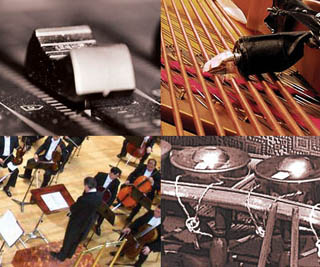Course Description
This course begins with the premise that the 1960s mark a great dividing point in the history of 20th century Western musical culture, and explores the ways in which various social and artistic concerns of composers, performers, and listeners have evolved since that decade. It focuses on works by classical composers …
This course begins with the premise that the 1960s mark a great dividing point in the history of 20th century Western musical culture, and explores the ways in which various social and artistic concerns of composers, performers, and listeners have evolved since that decade. It focuses on works by classical composers from around the world. Topics include the impact of rock, as it developed during the 1960s - 70s; the concurrent emergence of post serial, neotonal, minimalist, and new age styles; the globalization of Western musical traditions; the impact of new technologies; and the significance of music video, video games, and other versions of multimedia. The course interweaves discussion of these topics with close study of seminal musical works, evenly distributed across the four decades since 1960; works by MIT composers are included.
Course Info
Instructor
Departments
Learning Resource Types
assignment
Written Assignments
assignment
Presentation Assignments

Aspects of contemporary music. (Images clockwise from top left, courtesy of the photographers: mixing board fader by Chris Percival; prepared piano by Sue Ann Harkey; gamelan by Cathy Cole; orchestra by Pedro Sánchez, from Wikipedia.)










